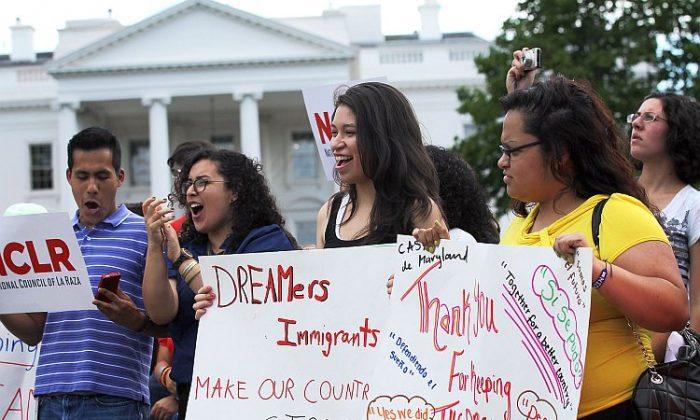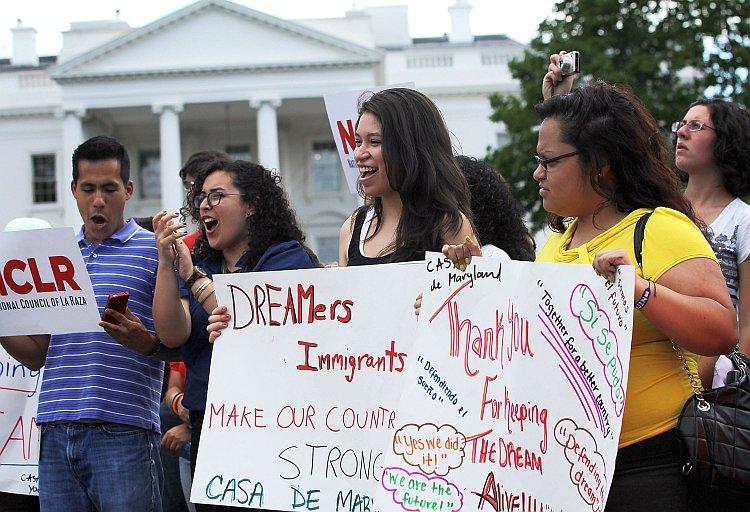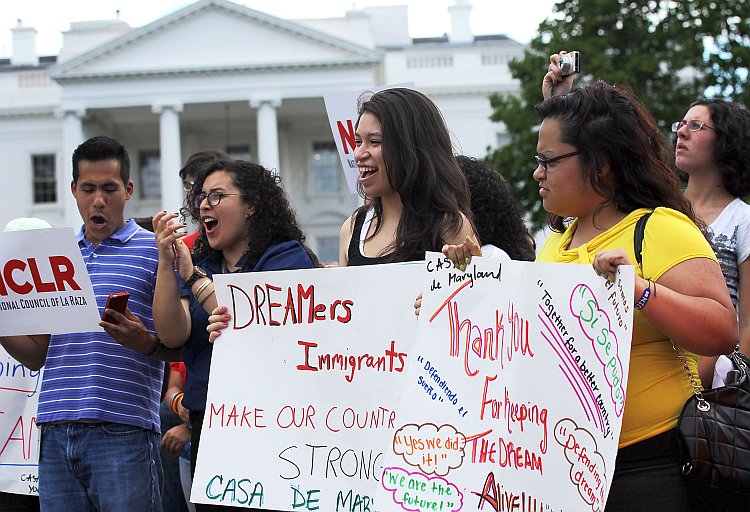The story behind the Dream Act is a uniquely American story: A child is brought to the United States illegally by immigrant parents, grows up here, and graduates high school feeling full of opportunity and promise—and then reality sinks in. With illegal status, a job is out of reach. For students in this situation, the Obama administration’s Dream Act announcement last week brought a sigh of relief, but the details of its implementation are raising many important questions.
President Obama and Secretary of Homeland Security Janet Napolitano plan to make deferred action available to certain illegal immigrants who came to the United States when they were under 16 and who are now under 30. Applicants must have been here at least five years, have finished high school, and have no serious misdemeanor or felony convictions. Deferred action means they will not be deported.
Current policy already makes such illegal immigrants a low priority for removal, but those accepted into the new program will get temporary permission to work.
Among the biggest of the unknowns is what might happen to a person who registers with the government as an illegal immigrant, if the administration changes. Would that person then be targeted for deportation? “That’s something I would be very concerned about,” said Crystal Williams, executive director of the American Immigration Lawyers Association.
Williams said she hopes the program is set up so that applicants’ information is in a separate, confidential file. She also thinks it would be best for young illegal immigrants to wait until after the election to approach the government. “I wish it could offer more assurances,” she said.
The precise meaning of a serious misdemeanor of a felony must be clarified. Using false identity documents can be a felony. “If a person is ineligible or commits fraud in the process of applying [for deferral], he or she could go on a list for removal,” said Williams.
A conviction of a felony, or three misdemeanors, or one serious misdemeanor will be the threshold. “What is considered serious will have to be hashed out,” said Williams. Probably domestic violence, DUI, or drug convictions would count as serious, disqualifying misdemeanors, according to Williams.
People with those kinds of convictions are already a priority for deportation. The well-informed young criminal should not apply for a deferral.
It will take the agencies time to implement the new policy, at least 60 days, according to Williams. The Department of Homeland Security (DHS) and the Immigration and Customs Enforcement (ICE) will need to work out the details of how to handle applicants.
When they are ready, the fees charged to applicants should take care of program expenses. It’s $380 for a work authorization, plus $80 for a background check, so for each applicant, the agencies will “intake $460 per person—that would support the program,” said Williams. If they keep it simple, it should be a net savings, because it is less expensive to defer removal than to follow the deportation process to the end.
Yet each case will be handled individually. “It depends on how they make adjudication,” said Mary Giovagnoli, director of the Immigration Policy Center.
“It will only work if the process has integrity and people get deferred status because of it.”
The Epoch Times publishes in 35 countries and in 19 languages. Subscribe to our e-newsletter.







